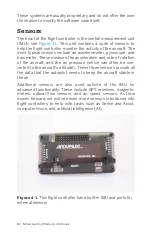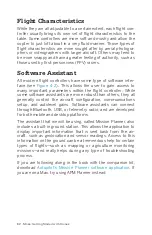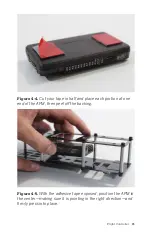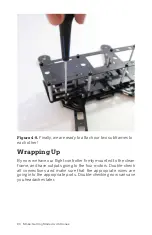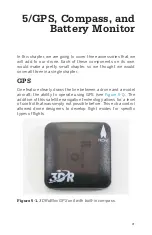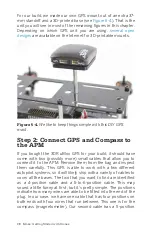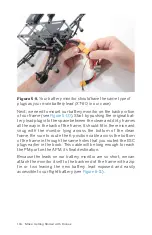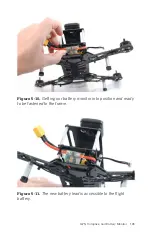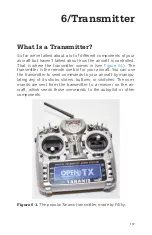
from your mobile to follow you from a predetermined height and
distance. The possibilities for sports coverage alone are fantas-
tic—imagine a camera drone always hovering 20 feet above the
quarterback’s head—but Follow Me should be used with cau-
tion. Because most small UAVs do not have Sense and Avoid
technology, Follow Me mode could cause trouble in tight or con-
gested environments. If you ski under that tree branch, your
quad won’t be able to tell it’s there and could fly right into it.
Compass
While GPS allows our drone to obtain a higher level of
autonomy, it wouldn’t be worth very much if it couldn’t keep its
heading. That is where the compass comes into play. Often bun-
dled together with the GPS into one unit (as in our demo build),
the compass tells our drone not only where all the cardinal
directions lie, but also which direction it is pointing to upon
startup and any changes that happen during its flight.
Is It Really a Compass?
For most of us, the term compass probably conjures up images
of that shiny round instrument you saw on your first hiking trip
or scouting adventure. You know the one I’m talking about, with
the needle that always points north. Your APM does not actually
have such a device built inside of it. It uses a small electronic
sensor called a magnetometer to find its compass bearings.
Just like a traditional compass, a magnetometer measures the
magnetic field in its immediate surroundings and uses that
information to determine which direction it is facing—only it
does so without the fancy needle. For the duration of this book,
the terms compass and magnetometer will be interchangeable.
94 Make: Getting Started with Drones
Summary of Contents for Belinda Kilby
Page 1: ......
Page 3: ...Make Getting Started with Drones Terry Kilby and Belinda Kilby...
Page 26: ......
Page 90: ......
Page 126: ......
Page 153: ...Figure 9 10 Compass setup Figure 9 11 Compass calibration ArduPilot Mega APM Setup 141...
Page 198: ......

